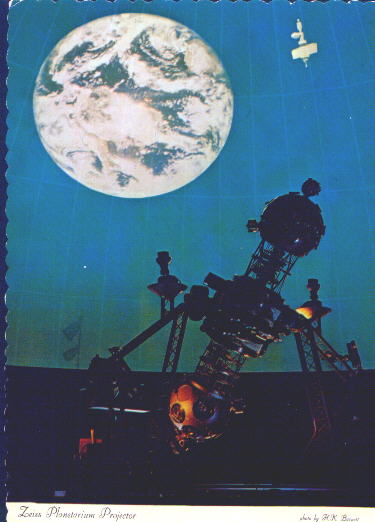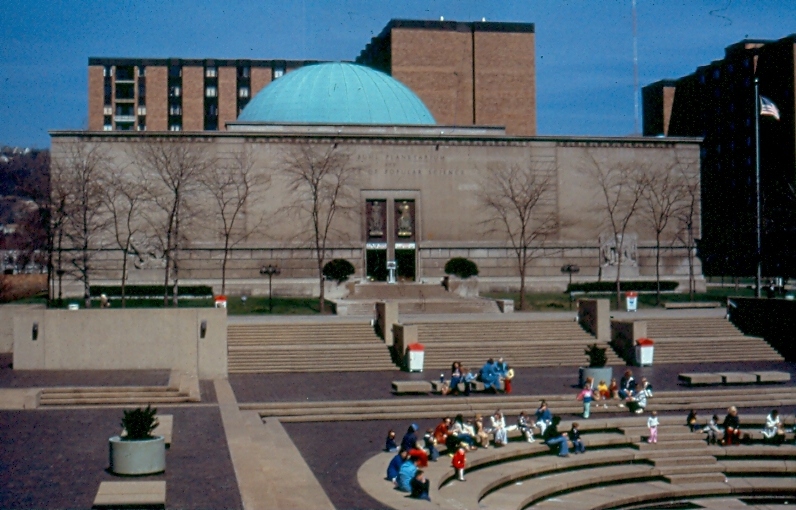
A Lunar Transit of the Sun photographed
by NASA's Solar Terrestrial Relations
Observatory B satellite orbiting the Sun.
The January 30 Transit will show the
Moon covering much more of the Sun.
(Image Source: NASA)
By Glenn A. Walsh
Reporting for SpaceWatchtower
There will be a very special New Moon on January 30. This New Moon includes a special Solar Eclipse ("Lunar Transit of the Sun") which can only be seen from Outer Space, the second time this month that there is a New Moon phase which closely coincides with lunar perigee, and with this New Moon the Chinese Calendar welcomes the Year of the Horse !
The January 30 New Moon will be different from most, as it includes a very unique type of Solar Eclipse. However, this Solar Eclipse, better known as a Lunar Transit of the Sun, can only be seen from Outer Space. NASA's Solar Dynamics Observatory satellite is scheduled to record this Lunar Transit of the Sun, which begins January 30 at 8:31 a.m. EST (13:31 Coordinated Universal Time) and lasts almost 2.5 hours. Approximately 90 percent of the Sun will be covered by the Moon, during this celestial event. And since the Solar Dynamics Observatory satellite is solar-powered, NASA has charged-up the spacecraft's batteries to endure the blackout!
With satellites in Outer Space, such transits happen periodically, when the Moon happens to come between the satellite and the Sun. Except during normal solar eclipses, the eclipse shadow never reaches the Earth.
At the end of this post is a link to a YouTube simulation of the January 30 Lunar Transit of the Sun.
For the second time in one month, Earth will experience the Moon phase of New Moon, when the Moon is not visible in the sky. At this time of the month (which has happened twice in this month of January, which is somewhat rare), the Sun completely lights-up the far side of the Moon, while the dark side of the Moon faces the Earth.
The Earth's gravitation "locks" one side of the Moon, so that side always faces the Earth, no matter what part of the month or Moon phase. So, although one side always faces the Earth, as the Moon orbits the Earth all parts of the Moon face the Sun and receive sunlight at some point during the month.
But, both of these New Moon phases coincide, closely, with lunar perigee, the closest point of the Moon from the Earth in the lunar orbit. At a time of lunar perigee, if the Moon could be seen, it would appear a little larger than at other times of the month.
As January has 31 days and one lunar orbit occurs about every 27 days (actually 27.322 days), this month is a little unusual as there are two lunar perigees in January. The first perigee occurred at the very beginning of the month on New Year's Day at 4:00 p.m. EST (21:00 Coordinated Universal Time) when the Earth was 356,923 kilometers from the Moon, while the second perigee occurs on Thursday, January 30 at 5:00 a.m. EST (10:00 Coordinated Universal Time) when the Moon will be 357,080 kilometers from the Earth.
Both perigees, on New Year's Day and on January 30, occur within a half-day of the Moon phase of New Moon. New Moon on New Year's Day (which was Lunation number 1126) occurred at 6:14 a.m. EST (11:14 Coordinated Universal Time), while New Moon will occur on January 30 (which will be Lunation number 1127) at 4:38 p.m. EST (21:38 Coordinated Universal Time).
And, because the New Moon phase comes at the same time as lunar perigee at both times in January, larger than usual tides on the ocean coasts are predicted at the times of both lunar perigees. Although the Moon's gravity primarily controls the oceans' tides, when the Moon and the Sun are aligned during the New Moon phase (or the Full Moon phase), particularly close to lunar perigee, the Sun's gravity added to the Moon's gravity makes the tides a little stronger than normal.
The point in lunar orbit when the Moon is farthest from the Earth each month is called lunar apogee. And in January, Full Moon and lunar apogee also closely coincided; not particularly surprising when one learns that both of this month's New Moons closely coincide with lunar perigee. The patterns of lunar perigee / apogee and Moon phase are similar, though not exactly the same.
Lunar apogee occured this month on Wednesday, January 15 at 9:00 p.m. EST (January 16, 2:00 Coordinated Universal Time), when the Moon was 406,532 kilometers from the Earth. The Moon phase of Full Moon (Wolfe Moon) occurred that very same evening, at 11:52 p.m. EST (January 16, 4:52 Coordinated Universal Time); this resulted in the January Full Moon being the smallest Full Moon in 2014. Since Full Moon occurs so close to the Moon's farthest point in its orbit from the Earth (most of the time, Full Moon does not occur so far from Earth), the Moon looked slightly smaller in the middle of January.
Last month also had the smallest Full Moon of the year. This occurred as last month marked the end of the previous year, and the patterns of Moon phases and lunar orbit are somewhat similar in two consecutive months.
This New Moon phase, on January 30, heralds the Chinese New Year, as the Chinese use a lunar calendar to mark their special observances. The Year of the Horse really begins on January 31, the actual date in China of the New Moon phase.
This week, we also mark three sad anniversaries, the most tragic milestones of the American Space Program:
* Mon., Jan. 27 (1967) - Anniversary of Apollo 1 fire; three astronauts perished: Gus Grissom, Ed White, Roger Chaffee. (Jan. 27)
* Tue., Jan. 28 (1986) - Anniversary of
STS Space Shuttle Challenger explosion; seven astronauts perished:
Francis Scobee, Michael Smith, Elison Onizuka, Judith Resnik, Ronald
McNair, Gregory Jarvis, Christa McAuliffe (Teacher-in-Space). (Jan. 28)
Viewed at Pittsburgh's original Buhl Planetarium and Institute of Popular Science (a.k.a. Buhl Science Center).
* Sat., Feb. 1 (2003) - Anniversary of
STS Space Shuttle Columbia disintegration during re-entry; seven astronauts perished: Rick D. Husband, William C. McCool, Michael P. Anderson, Ilan Ramon, Kalpana Chawla, David M. Brown, Laurel Blair Salton Clark. (Feb. 1)
YouTube Simulation of January 30 Lunar Transit of the Sun from Outer Space:
Link >>> http://www.youtube.com/watch?v=p8BY6JzpIU8
More from NASA regarding a Lunar Transit of the Sun from Outer Space:
Link >>> http://www.nasa.gov/audience/foreducators/topnav/materials/listbytype/SMIII_Problem33.html
More about Apogee and Perigee of the Moon:
Link >>> http://www.moonconnection.com/apogee_perigee.phtml
More about New Moon: Link >>> http://en.wikipedia.org/wiki/New_moon
More on the Chinese New Year: Link >>> http://en.wikipedia.org/wiki/Chinese_new_year
Source: Glenn A. Walsh Reporting for SpaceWatchtower, a project of Friends of the Zeiss.
Related Blog Posts ---
2nd Month in a Row: Smallest Full Moon of Year (2014 Jan. 14):
Link >>> http://spacewatchtower.blogspot.com/2014/01/2nd-month-in-row-smallest-full-moon-of.htmlEarth Closest to Sun Sat. Morning (2014 Jan. 4):
Link >>> http://spacewatchtower.blogspot.com/2014/01/earth-closest-to-sun-sat-morning.html
Smallest Full Moon of Year: Dec. 17, 4:28 a.m. (2013 Dec. 14):
Link >>> http://spacewatchtower.blogspot.com/2013/12/smallest-full-moon-of-year-dec-17-428-am.html
2014: 75th Year of Pittsburgh's Buhl Planetarium

Want to receive SpaceWatchtower blog posts in your inbox ?
Send request to < spacewatchtower@planetarium.cc >..
gaw
Glenn A. Walsh, Project Director,
Friends of the Zeiss < http://buhlplanetarium.tripod.com/fotz/ >
Electronic Mail - < gawalsh@planetarium.cc >
About the SpaceWatchtower Editor/Author: < http://buhlplanetarium.tripod.com/#GAW >
SpaceWatchtower Blog: < http://spacewatchtower.blogspot.com/ >
Also see: South Hills Backyard Astronomers Blog: < http://shbastronomers.blogspot.com/ >
Barnestormin: Writing, Essays, Pgh. News, & More: < http://www.barnestormin.blogspot.com/ >
SPACE & SCIENCE NEWS, ASTRONOMICAL CALENDAR:
< http://buhlplanetarium.tripod.
Twitter: < https://twitter.com/spacewatchtower >
Facebook: < http://www.facebook.com/pages/
Author of History Web Sites on the Internet --
* Buhl Planetarium, Pittsburgh:
< http://www.planetarium.
* Adler Planetarium, Chicago:
< http://adlerplanetarium.
* Astronomer, Educator, Optician John A. Brashear:
< http://johnbrashear.tripod.com >
* Andrew Carnegie & Carnegie Libraries:
< http://www.andrewcarnegie.
* Civil War Museum of Andrew Carnegie Free Library:
< http://garespypost.tripod.com >
* Duquesne Incline cable-car railway, Pittsburgh:
< http://inclinedplane.tripod.
* Public Transit:
< http://andrewcarnegie2.tripod.












